Mission: Impact podcast & blog
Build a better world without becoming a martyr to your nonprofit cause
Listen on:
|
As a nonprofit leader and now nonprofit consultant, I consider myself a life-long learner. In fact ‘learner’ is one of my top five strengths in both the Gallup StrengthsFinder assessment as well as Via values assessment. I spent some time in December looking back at the year and one of the things that I thought about my year in terms of learning. Learning shows up in a couple different ways for me. I love to read and have shared short summaries of a few of the books I have read this year in these posts – summer book reviews – winter book reviews. I also ask myself the question, “what did I learn?” each week when I do my weekly reflection. Thus I capture the informal learning that emerges as I work. Designing learning experiences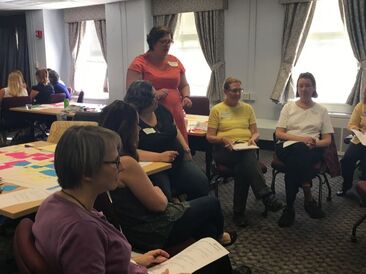 I design learning experiences for others as well. This year that included speaking engagements including workshops and sessions on a variety of topics:
I also created more in depth learning experiences for others. I led day-long workshops on building partnership and board development for a network of nonprofits as part of a longer series of trainings on strengthening organizational sustainability. One of the highlights of the past year was partnering with a colleague and 14 (relatively) new executive directors to facilitate a program designed to meet their specific needs. Through content and peer coaching, the group evolved over the course of eight months from a collection of individuals to a group who trusted each other with their most pressing challenges. It was so rewarding to support and help cultivate that shift. Nonprofit evaluative practice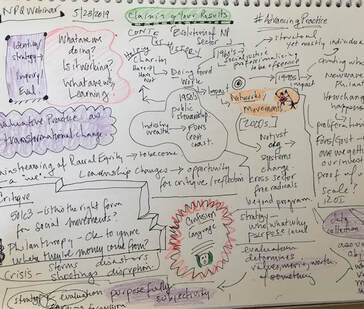 Claiming Your Results Claiming Your Results I participated in formal learning experiences offered by others. When I do, I practice my novice sketch-noting skills. A few highlights included: Nonprofit Quarterly’s webinar series on evaluative practice led by Jara Dean-Coffey and Jeanne Bell. The series stretched my conception of program evaluation and building learning organizations. My biggest take-away was the caution to be mindful of the purpose of any research. Part of this means making explicit the recognition that evaluation is always inherently subjective, even though it is often perceived as objective and the arbiter of worth and value. Being mindful of equity in evaluationToo many evaluation and other research efforts for programs that serve marginalized communities have been designed with the organization or researcher’s needs in mind, leaving the impact on the community out of the picture. The impact of this approach may be unintended or unintentional yet is extractive nonetheless. Learning and evaluation needs to be in service of the mission and mindful of impact, not just because one is curious. Learning with the brain in mind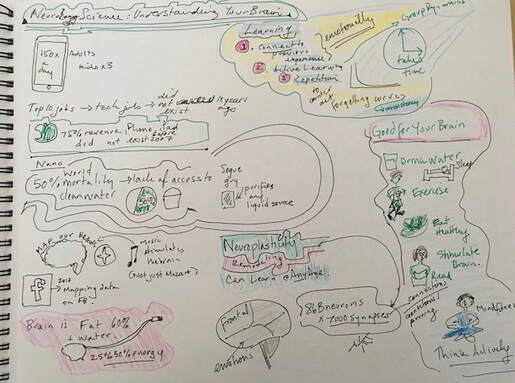 A session at American Society for Association Executive's (ASAE) Annual Conference in August focused on the basics of neuroscience and learning. Scientists now know that as adults we have neuroplasticity. So old dogs can learn new tricks! Designing learning with the brain in mind includes connecting the new information/content emotionally to the person’s previous experience, working with the material actively and repetition. It was good to hear that keeping my brain healthy includes all the habits we all have heard are healthy generally – staying hydrated, getting enough sleep, moving regularly, eating healthy, cultivating mindfulness and stimulating our brain on a regular basis. The last few years I have managed to make all of those regular practices, especially by reminding myself – something is better than nothing. Mission focused Collaboration Networks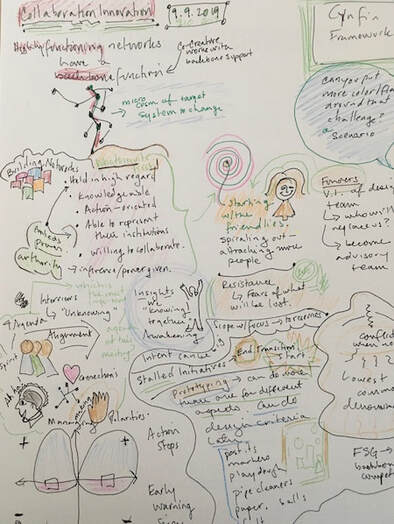 An exciting intensive training that I participated in focused on Collaborative Innovation. It centered on how to build collaborative networks intentionally to bring together organizations and groups of people. Networks have the potential to solve wicked problems beyond the capacity of one organization. Yet collaboration can be challenging and time intensive. By incorporating aspects of human centered design with iteration, rapid prototyping and testing, the network can move to action and not get bogged down in analysis paralysis. When started with intention they include both the power brokers in a system and those impacted by the system at the grassroots level, starting with the friendlies and then spiraling out. Harvesting in facilitation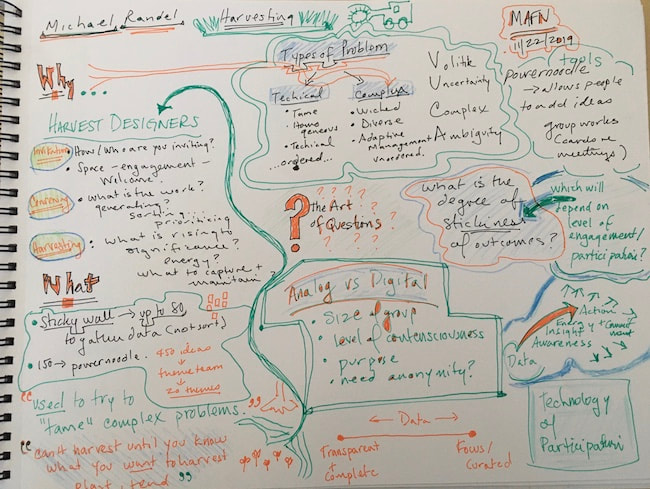 An important skill in facilitating is harvesting -- designing a meeting, a convening, a retreat with a set of intentions and outcomes in mind that will be harvested from the conversation. The degree of stickiness of the outcomes from a process is dependent on the level of engagement of those participating. When people talk about buy in, they need to remember that buy in is built not bought. Just telling people about a vision or a direction is not enough. Dewey contended that there is no real learning without reflection. “We do not learn from experience... we learn from reflecting on experience.” What are you reflecting on as the new year launches?
 Photo by rawpixel.com from Pexels Photo by rawpixel.com from Pexels Challenge: Nine new nonprofit executive directors came together to create a learning community for conservation movement leaders. The group aimed to learn about topics related to nonprofit management, governance, institutional advancement, and healthy partnerships. While the group could pursue organizing the learning program by themselves, they decided they would be better supported by a facilitator who would create the content and lead them, working collaboratively with the group to create a program that met the group’s needs. Approach: After interviewing each of the participants about their hopes for the program as well as the challenges they were facing with their organization, I worked with a planning committee to plan the monthly learning sessions. Each participant completed a self-assessment of their executive director competencies and drafted a professional learning plan to define their learning goals for the program.
During each monthly session we used half the session to dive into a topic and the second half for the group to participate in peer coaching circles. Peer coaching circles can take a number of different forms. To keep it simple, I set two basic ground rules for the time. Each person would present their challenge briefly and then the rest of the group would ask questions for a set amount of time. This process helped each person think aloud about their challenge and the questions from the group helped them consider aspects that they might have missed. This also provided the ‘questioners’ practice with being in a coaching stance, rather than jumping in with a solution. This was a useful skill for them to develop as they supervise staff. In between meetings, pairs met as accountability partners. Monthly topics included organizational culture, staff management, board development, strategic planning, mapping organizational impact, and creating a organizational dashboard. We culminated the program with a retreat that combined time with accountability partners, focus on a couple content areas as well as topics identified through an open space process. Results: Participants reported that they: Felt less alone. “It’s lonely at the top.” This sentiment was expressed early on as the peer-learning network was forming. Being able to compare notes, share wins and challenges and get feedback from peers was invaluable. It helped those in the network feel less lonely as they developed a group of trusted colleagues to whom they could reach out in times of doubt and challenge. Thought bigger. Several participants came into the program feeling confident about their abilities in running programs. They were unsure, however, about shifting to a more strategic level of organizational leadership. Through feedback from participants and others, they were able to shift their perspective and see how they could take their program management skills and use them as the foundation for their strategic work as executive directors. Built accountability. For new executive directors, this may be the first time they’ve worked without a direct supervisor. To help each participant achieve their goals, they paired up with an accountability partner and regularly met to discuss their progress. This practice is grounded in research that shows that if you write down your goals you are more likely to achieve them. If you share them with another person and then check in with that person on how you are doing on your goals, you are even more likely to follow through. These pairings not only helped participants advance their work, it strengthened their connections within the network. Want similar results? Inquire about a coaching call. 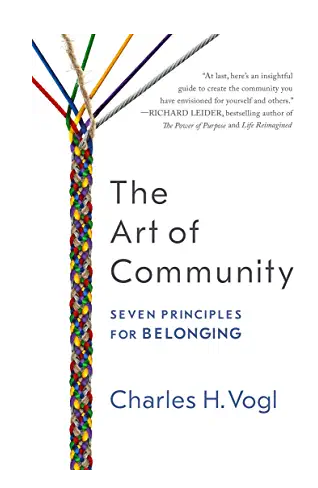 Here are three books to consider adding to your list: The Art of Community: Seven Principals for Belonging by Charles H. Vogl I was intrigued by the book’s subtitle since I am someone who moved a number of times over the course of my growing up. I spent a lot of time chasing that illusive sense of belonging. With the traditional forms of community breaking down and loneliness on the rise, more people are in the business of trying to create community. It could be an online community, a community of practice or a co-working space. Vogl describes the essential elements to build community including creating a boundary, initiations, rituals, symbols. While a bit philosophical, I found the book very accessible, enriched by stories illuminating the principals. 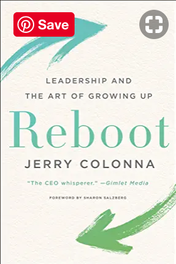 Reboot: Leadership and the Art of Growing Up by Jerry Colonna I heard about this book from an interview that I heard on one of my favorite podcasts, On Being with Krista Tippet. Jerry Colonna is Tippet’s executive coach. His insights on what people bring to their work and leadership from what they learned in childhood and their family of origin were fascinating. Colanna considers growing up part of being an authentic leader, especially identifying and letting go of those “ghosts in the machine” that we learned growing up, drive our behavior but no longer serve us as adults. Learning to sit in discomfort, letting go of our illusion of control, and peeling back the façade of “everything is awesome!” I appreciate his insights into the human condition. Yet I was struck by how like too many other business books the stories he included were from people represented a rarified stratosphere of our society of venture capital and start up CEOs. 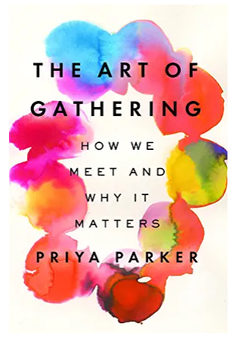 The Art of Gathering: How we meet and why it matters by Priya Parker This book was cited in the Art of Community and since a lot of what I do involves group meetings and gatherings, it caught my interest. What I didn't know is that Parker is a facilitator so the book had particular relevance to my work. Yet the book ranges beyond work focused gatherings and includes what makes a good party or ‘happening’ tick. Like I have advised and then forgotten to follow my own advice, a good gathering/meeting needs a clearly defined purpose. She encourages you ‘not to be a chill host’ and to take leadership of your event, why it is so important to pay attention to meaningful beginnings and endings and how to move the conversation beyond the merely polite to healthy controversy. Whether you would like to make your next get together more meaningful or have an big work gathering to facilitate, you will walk away with a deeper understanding of how to make that happen. Apparently this summer I am studying the “art” of things – since this shows up in each of these titles.
What’s on your reading list? 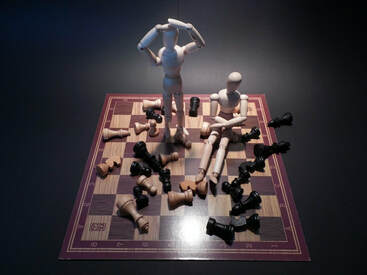 Too many people – especially women – suffer from perfectionism. While it used to be that this was the perfect “weakness” to admit in a job interview, perfectionism gets in the way of performance rather than enhancing it. Perfectionists live in fear of mistakes. Gripped in this fear, they struggle with committing to a course of action, to get started, or to finish a project. Try and make mistakes I was talking to someone who was in the throws of perfectionism. I joked – why not try and make mistakes? Set that as your goal. Make as many mistakes as possible today. I was joking but why not give it a try. You can’t learn without making mistakes so rather than avoid them why not try to have them? This seems very counterintuitive yet if you were to approach your day that way I am guessing you would jump into action – because how else would you up your mistake ante? Also I would guess that you are unlikely to make a lot of mistakes, but making that goal might make them seem a little less scary. What’s the “right” place to start? Another person was trying to figure out the “right” way to start doing more strategic work with her board. There were lots of reasons that the board was in an operational mode. Crises in the past had forced it to shift its focus to the day-to-day. With the crisis past it had not yet shifted gears. There were lots of possible ways to get started. But she was paralyzed with looking for the “right” one – the strategic one. Certainly there is value in being strategic for greater impact and efficiency. But searching for the perfect strategic action can also have the impact of not taking any action. My feedback to her – pick one and start as an experiment. See how it goes. It might not be the “right” one and if not, adjust and try something new. Planning and experimenting I love planning and love working with organizations to help them think through their future direction to help them be more strategic. At the same time, organizations trip themselves up when they fall into the trap of thinking that they can plan out everything in detail at the outset. You just do not know what of your plans will be a ‘mistake’ or a learning opportunity. The ‘mistake’ provides you the opportunity to shift gears and try something new. Try thinking of your plan as a series of experiments. This way you can hold the plan more lightly and be more open to learning. Identify a couple big goals to set your own or your organization’s direction. Plan in more detail for the first year of implementation, especially first actions. Then get started.
Need help thinking about how to get started? Inquire about a complementary coaching session.  If you are like me, the end of the year includes some time to look back and see what you have accomplished. As a nonprofit professional, you likely set some goals at the beginning of the year. How much progress did you make them? And further and probably more important– what did you learn from the experience? I use four tools to help me prioritize taking the time to reflect on what I have learned from my experiences. Daily wins At the end of each day, I take a few minutes to consider the day and write down what I accomplished – my daily wins. Some days those wins are big – and sometimes they are really small – like cleaning out my email! But even after a day that did not feel super productive I can always come up with items to note that I got done. It helps me see the progress I am making. One small step after another – moving forward. Weekly reflection First I take 30-45 minutes at the end of each week to do a weekly reflection. My daily wins journal helps remind me what I did over the course of the week. The weekly reflection is centered around seven topics and I answer the same questions each week. I focus on vision, awareness, needs, feedback, core skills, action and results. I begin each reflection by looking at the intentions I set for the week and think about how things went. Did it go as I imagined? What was different and why? Often times I am setting intentions around how I will feel during a piece of work – confident in a presentation or centered while facilitating a session. You can download my weekly reflection worksheet here. Six-month review At the half-year mark, I take a few hours to review my weekly reflection notebook. What happened? What were the ups and the downs? What patterns do I notice over the course of months? What did I take away from the experience? I use this worksheet to capture my notes as I review my weekly entries. Yearly professional learning plan To take this six-month review one step further I create a professional learning plan for the year. What do I want to learn over this coming year? I start by taking stock of where I am. What have I learned this past year? What does my current situation require of me? What do I currently contribute to my field? Then I think about where I want to be in a year. What is the next year going to bring for me? What challenges am I facing? What skills and knowledge do I need to do my job more effectively? Will an upcoming project push me in a new direction? What does the field demand from a successful professional? When I look back on this coming year, what do I want to have achieved? How will I learn the skills I am aiming for? This may include formal professional development opportunities – yet it likely also includes taking advantage of informal learning. By setting intentions about what I want to learn in the next year, I am ready when opportunity presents itself. Here is a template for creating your own professional learning plan. For example, a couple years ago I wanted to learn how to sketchnote. I bought a book, read about it, watched some videos. Now when I attend conferences, I go with a sketchbook and a couple colors of pens and I sketchnote each session I attend. My notes may not be super pretty or incredibly well illustrated but they help me remember the session. – They are also a great conversation starter for those at my table! Give yourself the gift of reflection In our go-go culture, it can be difficult to find the time to reflect when there are so many urgent things going on in the present. Yet the benefits are great when you take some time to capture your learning as you go. Make an investment in yourself by giving a broader view at the six month and end of year point. Give yourself the gift of some reflective time to support your learning! |
Categories
All
Archives
July 2024

Grace Social Sector Consulting, LLC, owns the copyright in and to all content in and transcripts of the Mission: Impact podcast, as well as the Mission: Impact blog with all rights reserved, including right of publicity.
|
Telephone301-857-9335
|
info[at]gracesocialsector.com
|
Grace Social Sector Consulting, LLC, owns the copyright in and to all content in, including transcripts and audio of the Mission: Impact podcast and all content on this website, with all rights reserved, including right of publicity.
|